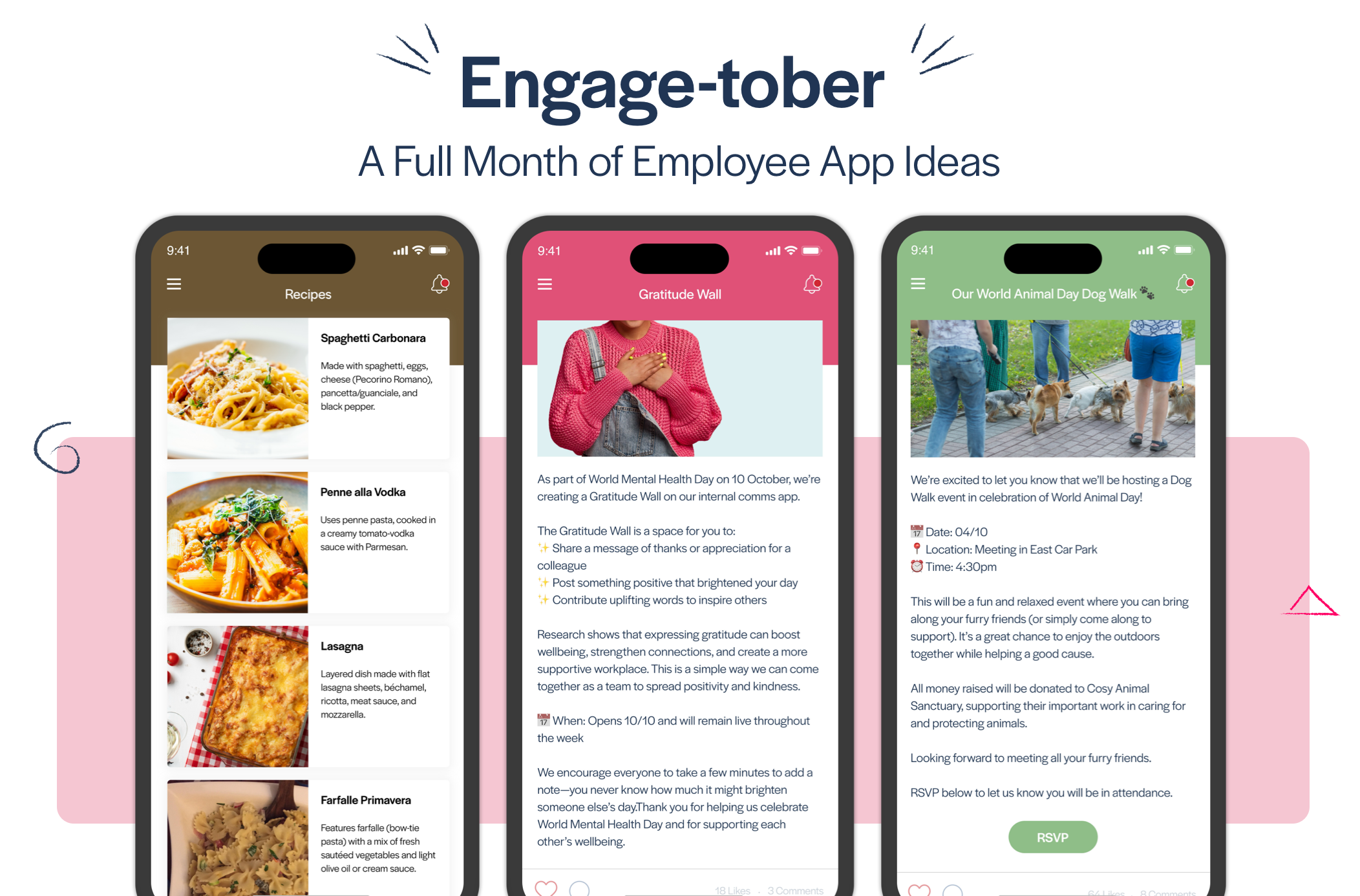
Blog
Top Challenges in Manufacturing & How an Employee App Can Help
Facing ongoing labour issues and threats to the supply chain, the manufacturing industry is in a precarious position today. Though it’s showing signs of growth despite the many obstacles, it will take careful planning, along with a dedicated approach to employee satisfaction and engagement, to build momentum in 2022 and beyond.

It may seem counterintuitive that we’re seeing so many positive economic indicators in manufacturing at present. With historic labour shortages—thanks to the Great Resignation and other post-COVID factors—along with unprecedented challenges to the modern supply chain, it would make sense for the manufacturing outlook to be poor.
Instead, we’re seeing positive signs of recovery in 2022, due in large part to the long-term promise of the vaccine rollout. In fact, according to a recent Manufacturing Industry Outlook put forward by Deloitte, industrial production and capacity have both surpassed pre-pandemic levels as of midyear 2022.
Still, despite the apparent rebound, there is cause for concern in the manufacturing industry. In contrast to its well-oiled past, the supply chain is vulnerable today, and ongoing stop-starts are creating overall volatility. Meanwhile, the workforce as a whole is behaving in entirely different ways, with workers increasingly likely to prioritise the “soft” benefits of employment, such as expanded remote-work flexibility, and defined opportunities for professional development.
As we look to the second half of 2022, and the years beyond, the manufacturing industry is likely to experience even more turbulence. To stay competitive in this new landscape, manufacturers will need to stay nimble, and adopt new strategies and technologies that support employee engagement. An employee app can be a key part of this approach.

Manufacturing Industry Trends
According to Deloitte, there are five key trends that are impacting the current and near-future outlook for manufacturing companies around the world.
#1 Workforce Shortages
The number of unfilled jobs has reached record levels in 2022. To face this challenge head-on, manufacturers need to rethink their employment offering—everything from rebranding their company through a more employee-friendly lens that can attract talent, to developing internal programs that support second-career training and other opportunities for advancement among existing employees.
And while remote work may not always be as feasible when it comes to manufacturing, as compared to more traditional “desk jobs” that permit a more flexible schedule, manufacturers should explore ways to offer some degree of flexibility to their workforce.
#2 Supply Chain Volatility
With near-constant disruptions to the supply chain today, manufacturers know they can’t get too comfortable with a single approach. Demand is continuing to outpace supply; raw material costs are rising; low inventory levels are creating confusion in order fulfilment; and the current truck driver shortage is creating transportation and delivery challenges at every step of the supply chain. Manufacturers will need to adopt technology that improves transparency along the full supply chain.

#3 Expansion of Smart Factories
Broadly composed of digital capabilities and artificial intelligence, so-called smart factories are on the rise—and for good reason. From predictive analytics to robots and other AI on the factory floor, smart factories offer a more reliable and connected manufacturing process from start to finish.
What’s more, emerging technologies can help operations of any size to scale to meet increasing demand. Manufacturers should evaluate their current smart offerings and look to upgrade capabilities across the full manufacturing process, particularly with the emergence of 5G capabilities.
#4 Cybersecurity Threats on the Rise
Cybercrime is surging today and showing no signs of slowing down. From operational networks to marketing and CRM tools, and from accounting and payroll to general corporate IT, both internal and external networks are vulnerable to attack. Like other industries, manufacturing will need to place renewed emphasis—and money—on anticipating, preventing, and responding to various cyber threats.
One critical piece of this strategy is ensuring that employees are trained to spot potential cybercrimes, and that the workforce is equipped and empowered, from the top-down, to react to threats.
#5 Investing in ESG
Perhaps no other sector is experiencing the rise of environmental, social, and governance (ESG) factors in quite the same way as manufacturing. Sustainable initiatives are growing across nearly every industry, and these pivots have a material impact on everything from operational standards to hard manufacturing costs.
As increasingly more consumers demand carbon-neutral or other sustainable end products, and as more employees are seeking to work for companies that prioritise ESG goals and guiding principles, manufacturers will need to take proactive steps to meet new regulations and to adopt sustainable practices throughout their operations.
How An Employee App Can Help
The complexity of these overlapping trends means there’s no one-size-fits-all approach that manufacturers can take to completely safeguard their operations. However, adopting and properly implementing an employee app can go a long way toward ensuring long-term success amid the ongoing volatility. Here are just a few ways that employee apps can help.

Company Updates
The benefits of creating and disseminating regular announcements are two-fold: companies can create a regular cadence for communicating important information to a dispersed workforce, and employees can draw from the sense of corporate culture this usage promotes. This helps everyone stay “in the loop,” and reinforces the company’s brand to employees who may otherwise have only limited interactions with leadership, or those outside of their own teams.
Digital Storage “Locker”
Thrive.App offers a secure digital space called Locker that enables employees to store important work-related documents. This allows for easy, on-the-go access to files, such as payslips, training certificates, benefits information and more—essentially, everything an employee needs, at the touch of a button.
Safety Standards
Another benefit of an employee app is the ability to store—and maintain—critical information like compliance and safety standards. A company can easily keep these standards up to date within the app, ensuring that employees always have access to the most recent standards that are expected. And employees benefit from having one simple and streamlined place to look for workplace information, no matter the subject, and no matter the time or place they may need it.

Multi-Lingual Support
With manufacturers employing an increasingly diverse workforce, an employee app can help to simplify all manner of two-way communication across various languages. Leadership can distribute important information in-language, and employees can read and respond as needed, without anything being lost in translation.
Employee Recognition
Another key benefit of employee apps is the ability to foster a stronger, deeper culture by aligning core values with employee performance. Thrive.App enables managers to recognise their workers’ efforts, and it also empowers workers to recognise each other.
From casual “virtual high-fives” to recognise someone who is performing above and beyond expectations, to more formalised success stories and awards, this tool can be a key component in employee engagement—more important now than ever before.
See How It Works
While the manufacturing industry is facing unique challenges in the months and years ahead, they’re not alone when it comes to solving for employee engagement and satisfaction. Read more about our employee app success stories and see how it all comes together for companies across every sector, every day.









